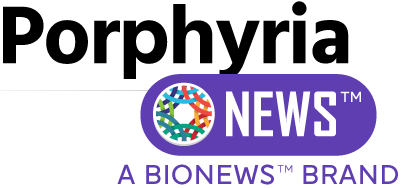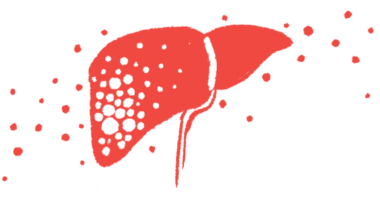Givlaari Markedly Reduces AIP Attacks, Phase 3 Trial Shows

People with acute intermittent porphyria (AIP) who were treated with Alnylam Pharmaceuticals’ RNA-based therapy Givlaari (givosiran) had a 74% reduction in porphyria attacks and sustained decreases in toxic products over six months compared with patients on a placebo, a Phase 3 trial shows.
Givlaari-treated patients also reported fewer days requiring hemin treatment for acute attacks, as well as improvements in their ability to perform daily activities and in overall health. Hemin is made of red blood cells processed from human blood.
The positive results of this trial, called ENVISION, have already supported regulatory approvals of Givlaari in the U.S. and the European Union.
The findings were detailed in “Phase 3 Trial of RNAi Therapeutic Givosiran for Acute Intermittent Porphyria,” published in the New England Journal of Medicine (NEJM).
“We believe the publication of the ENVISION Phase 3 study results in NEJM further underscores the clinical benefit of [Givlaari],” Manisha Balwani, MD, professor at the Icahn School of Medicine at Mount Sinai and the study’s lead author, said in a press release.
“The significant reduction in annualized attack rate, paired with improvement in multiple other disease manifestations in patients experiencing ongoing attacks, demonstrate the potential therapeutic impact of [Givlaari] for patients afflicted with AHP,” Balwani said.
Givlaari is an RNA-interference therapy (RNAi) designed to degrade the messenger RNA generated from the ALAS1 gene to prevent production of the ALAS1 enzyme. An mRNA molecule carries a genetic sequence complementary to DNA to other parts of the cell for processing. This gene encodes a mitochondrial “housekeeping” enzyme.
The approach is intended to lower the toxic levels of two compounds, delta-aminolevulinic acid (ALA) and porphobilinogen.
Funded by Alnylam, ENVISION (NCT03338816) enrolled 94 patients (mean age 38.8) and was conducted in 18 countries around the world. Among the participants, 89 had AIP — the most common form of acute hepatic porphyria (AHP) in most countries. Other AHP subtypes included two cases of variegate porphyria (VP), one of hereditary coproporphyria (HCP), and two of AHP without an identified mutation.
Participants were randomly assigned to receive either Givlaari at a dose of 2.5 mg/kg or placebo once a month for six months. The treatment was given by subcutaneous (under-the-skin) injection.
The primary goal was the annualized rate of porphyria attacks (annualized attack rate) among patients with AIP during the six-month period. Attacks were defined as those that required hospitalization, urgent healthcare visits, or treatment with hemin at home.
The results revealed that the average rate of attack was reduced from 12.5, in patients taking placebo, to 3.2 in those receiving Givlaari, representing a 74% decrease. In the Givlaari group, the median attack rate was 1, compared with 10.7 in the placebo group — a 90% relative difference.
Half of the patients receiving Givlaari had no porphyria attacks compared with 17% of participants in the placebo group. The lower attack rate was evident in the first month of treatment and was sustained throughout the study, the results showed.
Secondary goals included the urinary level of ALA, which was reduced by 86% with Givlaari compared with the placebo, and PBG levels, which were lowered by 91%.
The average number of days of hemin treatment dropped from 29.7 days in the placebo group to 6.8 days in the Givlaari group, a 77% difference. More than half of the participants treated with Givlaari had no days of hemin treatment compared with 23% of placebo-treated patients. A significant reduction also was seen in daily worst pain.
Overall, in all patients with AHP, the average attack rate was 73% lower with Givlaari. The percentage of individuals who had improvements in the ability to function and perform daily activities was larger in the Givlaari group than among the participants given a placebo.
Adverse events were reported more frequently in the Givlaari group and included injection-site reactions, nausea, chronic kidney disease, elevated levels of aminotransferase (a liver disease marker), rash, and fatigue.
After completing the trial, 93 of the 94 patients chose to continue treatment with Givlaari in an open-label extension (OLE) study. The results from the 12-month OLE period, which demonstrated sustained reduction in attack rate with Givlaari and no new adverse events, will be presented during an upcoming webinar for healthcare professionals. It also will be made available on Alnylam’s website.
“Among patients with acute intermittent porphyria, those who received [Givlaari] had a significantly lower rate of porphyria attacks and better results for multiple other disease manifestations than those who received placebo,” the scientists wrote.
“GIVLAARI represents an important advance for the treatment of AHP, offering a therapeutic option which can help prevent or reduce the painful, often-incapacitating attacks and reduce daily worst pain associated with the disease,” said Akin Akinc, PhD, general manager of the Givlaari program at Alnylam.
“Publication of the pivotal ENVISION Phase 3 data in NEJM is a recognition of the clinical impact possible with GIVLAARI and, more generally, with RNAi therapeutics, a whole new class of medicines,” Akinc added.






